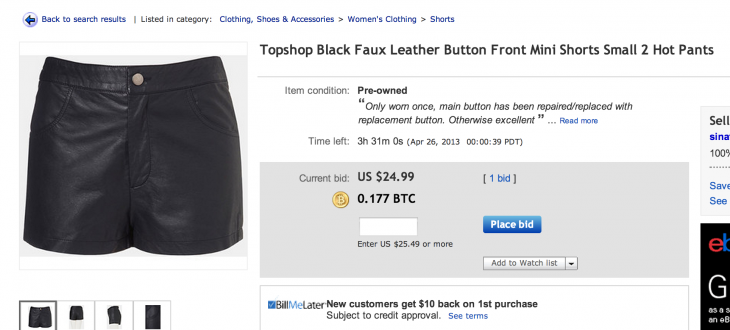
Charles Krupa / AP
See images from the scene of the explosions.
By Bill Dedman, Richard Esposito and Tracy Connor, NBC News
Boston was on high alert Tuesday as the FBI took over the hunt for whoever set off two powerful bombs at the finish line of the city's marathon, killing at least three people and wounding at least 140 people in a vicious blizzard of shrapnel, officials said.
"I am not prepared to say we are at ease at this point in time," Boston Police Commissioner Ed Davis said at a briefing six hours after the attack transformed the celebrated race into a blood-spattered crime scene.
Commuters were warned their bags would be searched on Tuesday morning. "It will not be business as usual," Massachusetts Gov. Deval Patrick said. "It's not going to be easy, simple or regular."
As of 4 a.m ET, 126 patients were still being treated at six local hospitals. They included 31 at Brigham & Women’s Hospital, of which two were in a critical condition, and 10 at Boston Children’s Hospital, where an official told the Boston Globe the youngest patient was three years old.The bombs were filled with ball bearings that sprayed into the crowd when they exploded, law enforcement officials told NBC News. The dead included an 8-year-old boy. Some victims lost limbs.
In an apparent act of terrorism, two explosions at the finish line of the Boston Marathon killed at least two people and injured more than 100 others. President Obama addressed the nation, saying all Americans stand with the people of Boston. NBC's Anne Thompson reports.
Long after nightfall, investigators were inspecting the mounds of personal belongings left by those fleeing to scene to make sure there were no more explosives, while firefighters were chasing bomb scares around the jittery city. SWAT team members were on patrol at several hotels in the Back Bay area.
Water cannons were used to clear a number of suspicious packages near the scene. A fire at the John F. Kennedy presidential library more than an hour after the blasts appeared to simply be caused by an electrical short, police said.
Early Tuesday, law enforcement officials went to an apartment building at 364 Ocean Avenue in the north Boston suburb of Revere, where they interviewed two men and were seen by reporters removing two trash bags and a duffle bag. It is still unclear what significance, if any, this had with regard to the bombing investigation.
The FBI said it was flooding the city with investigators from the Joint Terrorism Task Force and declined to say if agents had any suspects or clues to a motive.
"It is a criminal investigation that is a potential terrorist investigation," Special Agent in Charge Richard DesLauriers said.
Boston police issued an alert for a rental van that may have sought access to the marathon route, and another alert for a man wearing dark clothing and a hood who was seen leaving the scene of the blasts.
But as he revealed the death toll had climbed to three, Davis stressed that authorities had not identified a suspect and were instead "talking to" numerous people.
The Boston Globe's Steve Silva talks to NBC's Brian Williams about the footage he shot at the moment explosions rocked the finish line of Monday's Boston Marathon.
The police commissioner's comments echoed President Barack Obama's vow earlier in the day to bring the attacker or attackers to justice.
The two blasts, about 20 seconds apart just before 3 p.m. in the thick of the race, sent huge plumes of white smoke into the air, forced marathoners and spectators to run for their lives, and left a ghastly tableau on streets that had been filled with joys moments before."We still do not know who did this or why, and people shouldn’t jump to conclusions before we have all the facts, but make no mistake, we will get to the bottom of this," Obama said from the White House several hours after the blasts.
"In 28 years, this is definitely the worst I've seen," said District Fire Chief Ron Harrington of the Boston Fire Department's District 3.
"Bodies and body parts. Blood all over. A little boy lying in the street. A young woman in her twenties. Both dead. It was mayhem. I saw two people with arms hanging loose, and one without a leg. A shoe with flesh still in it."
Video from the scene show one marathoner thrown to the ground by the force, police desperately tearing down barriers to get to victims, medics pushing gurneys loaded with dazed men and women to ambulances.
Rachel Maddow updates the latest details from Boston following a press conference by Massachusetts officials and talks with Boston Globe reporter David Abel about what he witnessed standing just feet away from the initial blast at the Boston Marathon finish line.
“All the sudden there was a massive boom. There was a sort of concussive blow that pushed a lot of people back. I could see runners falling in front of me,” said Dave Abel, a reporter for The Boston Globe who was 10 feet from one of the explosions.
“When the smoke started to clear, I could see lots of bodies,” he said. “I could see one woman staring vacantly into the sky. I could see a lot of mangled limbs, a lot of blood and shattered glass. It was probably the most horrific thing I’ve ever seen.”
Dr. Alisdair Conn, chief of emergency medicine at Massachusetts General Hospital, characterized the wounds as something Americans are more accustomed to seeing on the news from a bombing in Iraq or Israel.
"This was a very powerful blast. There were serious, serious injuries," the police commissioner said.
Some of the wounded were treated near the scene. The Associated Press reported 144 people were injured in total.
'Strong and resilient'The race — which drew 27,000 participants from 96 countries -- has been run since 1897 on Patriots Day, the third Monday in April, which coincided with Tax Day this year. Security experts said the FBI would undoubtedly look into the possible significance of the date as they tried to find the bomber and the motive.
Senior counter-terrorism officials involved in the case told NBC News that they had not determined whether the attack was domestic or international. Internet chatroom jihadists have made claims for credit, but they have been discounted, officials said."Patriots Day and Marathon Monday are usually celebrated all across Boston, but today our cheers were turned to prayers,” Mayor Thomas Menino said. “But Boston is strong and resilient, and we come together in times of need. We will get through this, and we will find those responsible.”
Michael Leiter, MSNBC and NBC News national security analyst, and former director of the National Counter Terrorism Center Center, talks with Rachel Maddow about what the impact of the explosive devices indicates about their size, composition and intent.
Evan Kohlmann, a terrorism analyst for NBC News, said that authorities could examine residue from the blasts to determine the grade of explosive used, which could help them determine whether they're looking for a U.S.-based lone-wolf bomber or an organized foreign-sponsored terrorist cabal.
"There’s an emphasis on these soft-targeted attacks now. We’re moving away from the spectacular attacks and we’re moving into the small-grade, homegrown attacks,” he said.
Authorities gave a phone number for people in search of loved ones — 617-635-4520. They encouraged people with information about the blasts to call 1-800-CALL-FBI.
NBC News' Pete Williams, Jonathan Dienst and Alastair Jamieson contributed to this report.


























